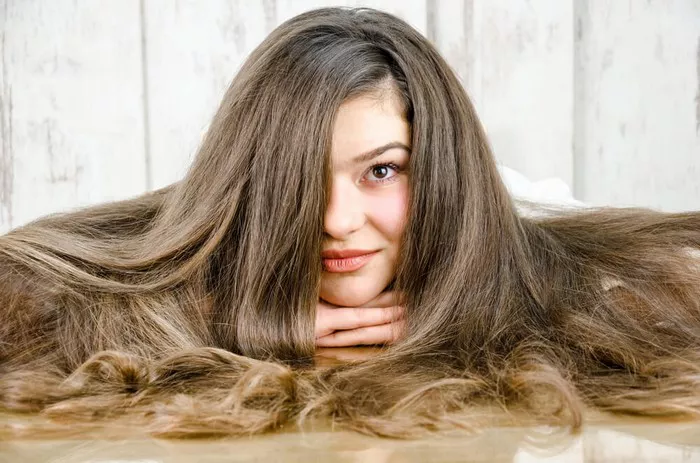If you’ve ever stepped out of the shower, dried your hair, and felt like you accidentally stuck your finger in a light socket, you’re not alone. Poofy hair—also known as frizz—is one of the most common hair complaints. But why does it happen?
The answer isn’t simple, because your hair’s texture, your environment, and even your daily habits all play a role. Let’s break down the science of poofy hair, step by step, so you can finally understand what’s going on—and how to fix it.
What Is Poofy Hair, Anyway?
Poofy hair happens when individual strands “lift” away from each other, creating a fuzzy, uneven texture. Instead of lying smooth, the hair cuticle (the outer layer of your hair) becomes rough or raised, which scatters light and makes hair look dry or messy. But why does this happen? Let’s start with the basics: your hair’s structure.
The Science of Hair: Cuticles, Cortex, and Moisture
To understand poofiness, you need to know how hair works. Each strand has three layers:
- The cuticle: A protective outer layer made of tiny, overlapping “scales.”
- The cortex: The middle layer, which gives hair its strength and color.
- The medulla: The innermost layer (not always present in fine hair).
When the cuticle lies flat, hair looks smooth and shiny. But if the cuticle scales lift—due to damage, humidity, or friction—the cortex absorbs or loses moisture unevenly, causing frizz.
Ask yourself: Do you notice more poofiness after brushing, washing, or spending time outside?
Humidity: The #1 Culprit Behind Poofy Hair
Humidity—moisture in the air—is a major cause of frizz. Here’s why:
- Hair is hygroscopic, meaning it absorbs water from the air.
- When the air is humid, water molecules seep into the cortex, causing strands to swell.
- Swollen hair pushes the cuticle outward, creating a rough, poofy texture.
This is especially true for curly or wavy hair, where moisture can disrupt the hair’s natural shape.
Ask yourself: Does your hair get poofier on rainy days or in summer?
Your Hair Type Matters
Hair texture plays a huge role in frizz. Let’s compare:
- Straight hair: Natural oils (sebum) from the scalp travel easily down the shaft, keeping it smooth.
- Curly/coily hair: The twists and turns slow oil distribution, so ends dry out faster.
- Thick hair: More strands = more surface area for cuticles to lift.
Curly-haired folks often see more poof because their hair’s structure makes moisture absorption uneven.
Ask yourself: Is your hair straight, wavy, curly, or coily? Do the ends feel drier than the roots?
Porosity: Is Your Hair a Sponge or a Raincoat?
Porosity (how well hair absorbs moisture) affects frizz:
- Low porosity: Cuticles are tightly closed. Hair resists moisture, leading to product buildup that can weigh hair down—or cause frizz when humidity finally penetrates.
- High porosity: Cuticles are too open. Hair absorbs moisture quickly but loses it just as fast, leaving it dry and prone to poof.
Ask yourself: Does water bead up on your hair (low porosity) or soak in instantly (high porosity)?
Damage: The Silent Poof-Maker
Damaged hair is more likely to frizz. Common causes include:
- Heat styling: Blow dryers, flat irons, and curling wands dehydrate hair and crack the cuticle.
- Chemical treatments: Bleach, dye, and perms weaken the cortex.
- Mechanical damage: Rough brushing, tight ponytails, or cotton pillowcases create friction.
Ask yourself: Do you use heat tools daily? Have you recently colored your hair?
The Wrong Products Can Backfire
Your shampoo, conditioner, and styling products might be making things worse:
- Sulfates: Harsh cleansers strip natural oils, leaving hair dry.
- Alcohol-based products: These evaporate quickly, causing dehydration.
- Skipping conditioner: Without hydration, cuticles stay raised.
Ask yourself: Does your shampoo lather a lot? Do your styling products contain alcohol?
Environmental Stressors
Beyond humidity, other factors contribute:
- Hard water: Minerals (like calcium) coat hair, blocking moisture.
- Sun exposure: UV rays weaken the cuticle.
- Wind: Causes tangles and friction, roughening the cuticle.
Ask yourself: Does your tap water leave residue on dishes? Do you spend hours outdoors?
Daily Habits That Increase Frizz
Small choices add up:
- Rubbing hair with a towel: Creates friction and roughs up the cuticle.
- Brushing dry hair: Especially damaging for curls, which stretch and break.
- Over-washing: Strips natural oils that protect against humidity.
Ask yourself: Do you scrub your hair dry? How often do you wash it?
How to Fix Poofy Hair: Solutions for Every Cause
Now that we’ve covered the “why,” let’s talk solutions:
- Humidity: Use anti-frizz serums with silicones (like dimethicone) to seal the cuticle.
- Curly hair: Try the “curly girl method” (no sulfates, gentle cleansing).
- Low porosity: Use lightweight, liquid-based products.
- Damage: Invest in protein treatments (to repair the cortex) and heat protectants.
- Hard water: Install a shower filter.
Ask yourself: Which of these solutions fit your hair’s needs?
Conclusion
Poofy hair isn’t a flaw—it’s a sign that your hair is reacting to its environment or care routine. By understanding your hair type, porosity, and habits, you can choose targeted fixes. Start by asking: What’s my hair telling me? With patience and the right tools, you can turn poof into smooth, healthy shine.
Related topics:
Hair Poofy at the Ends: Tips to Treat and Prevent It
Why Does Hair Poofy When Brushing It?
Why Is My Hair So Thick and Poofy? A Detailed Guide


